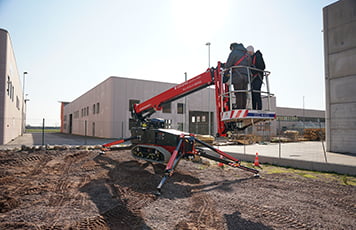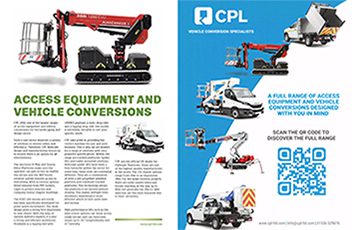Ensuring MEWP stability on steep surfaces
You might be gearing up for a particularly challenging setup on your upcoming job, where you will be navigating dead ash and some fibre optics. These specific tasks require a Mobile Elevating Work Platform (MEWP). The twist? Your operation site features a notably steep driveway.
Start by evaluating your operation site
When setting up a MEWP on a steep incline, stability is our top priority. Make sure that everything stays perfectly stable under all conditions to prevent any accidents and keep everyone safe.
Here’s how we can ensure our MEWP doesn’t budge, no matter the slope:
Manual adjustments for precision
Even the best auto-levelling features on modern MEWPs as crawler platform can meet their match on steep or uneven ground. When these systems don’t cut it, manual adjustments are the way to go. This means we get hands-on, making sure each leg is precisely positioned to handle the specific angles and bumps of the terrain. Manual levelling is all about detail, and it takes a sharp eye and some solid experience to get it just right.
Adding extra support
Besides anchoring and adjusting, adding extra supports can make a huge difference. We often use stabilisation pads under the legs. These help distribute the MEWP’s weight more evenly and prevent any sinking or tilting, especially on softer surfaces like old asphalt or loose soil. It’s like giving the MEWP a firmer footing so it can stand strong against the slope.
Keeping a watchful eye
After we’ve got everything anchored, adjusted, and supported, keeping an eye on things is key. We continuously monitor the stability of the setup throughout the operation. It’s important to keep checking that everything stays level and secure, especially as conditions might change—like the ground getting softer after a rain, or the weight shifting as we move around. Staying vigilant and ready to tweak things as needed helps us ensure ongoing stability. Modern MEWP’s have sensors which will alert you if the stability shifts during operation. If this happens, return to stow and restabilise the legs.
Choosing the right MEWP
Among various models of MEWP available on the market, the tracked spider lift emerges as your leading option. These lifts are particularly designed to handle inclines up to 34% or 19 degrees, which comfortably covers the requirements. The advantage of the spider lift lies in its flexible, cranked legs which can better adapt to uneven and steep terrains, offering superior stability and safety.
Using spider lifts
Stability is our foremost concern. To effectively stabilise the MEWP, anchoring the legs is more than just necessary. In instances where the auto-level features falter, manual adjustment becomes necessary. This hands-on approach ensures we avoid any risks associated with instability.
By fully extending the boom laterally and applying a gentle ‘bounce’, we can detect any movement or potential instability. This isn’t merely about being cautious; it’s a vital safety measure to prevent any accidents before we begin the actual work.
The risk of setting up on a hard, sloped surface like a driveway is significant due to potential slipping. Ideally, we’d excavate and level the area where the legs are to be placed, although this isn’t always possible on concrete. A viable alternative could be placing the legs on adjacent softer ground, such as a garden, which can drastically enhance stability. Always use spreader plates to distribute the weight. These are sometimes permanently attached to the legs, but they could also be stored within the body of the spider lift.
Training and experience insights
Training provides the foundation. Despite completing necessary courses and refreshers, the intricacies of working on steep slopes are sometimes glossed over. Consequently, we rely heavily on our judgment and on-the-ground experience. We’ve observed teams enhancing stability by drilling into old tarmac to lay down planks, creating additional grip to prevent the MEWP from sliding.
Moreover, sharing insights and techniques among the crew has proven invaluable. Discussions on past projects where similar challenges were encountered have led to improved safety protocols and innovative problem-solving strategies.
What should you keep in mind?
Opting for a spider lift is likely your best choice for safely managing the steep incline of these jobs. Regardless of the MEWP model you choose, the primary focus remains on ensuring a secure setup.










